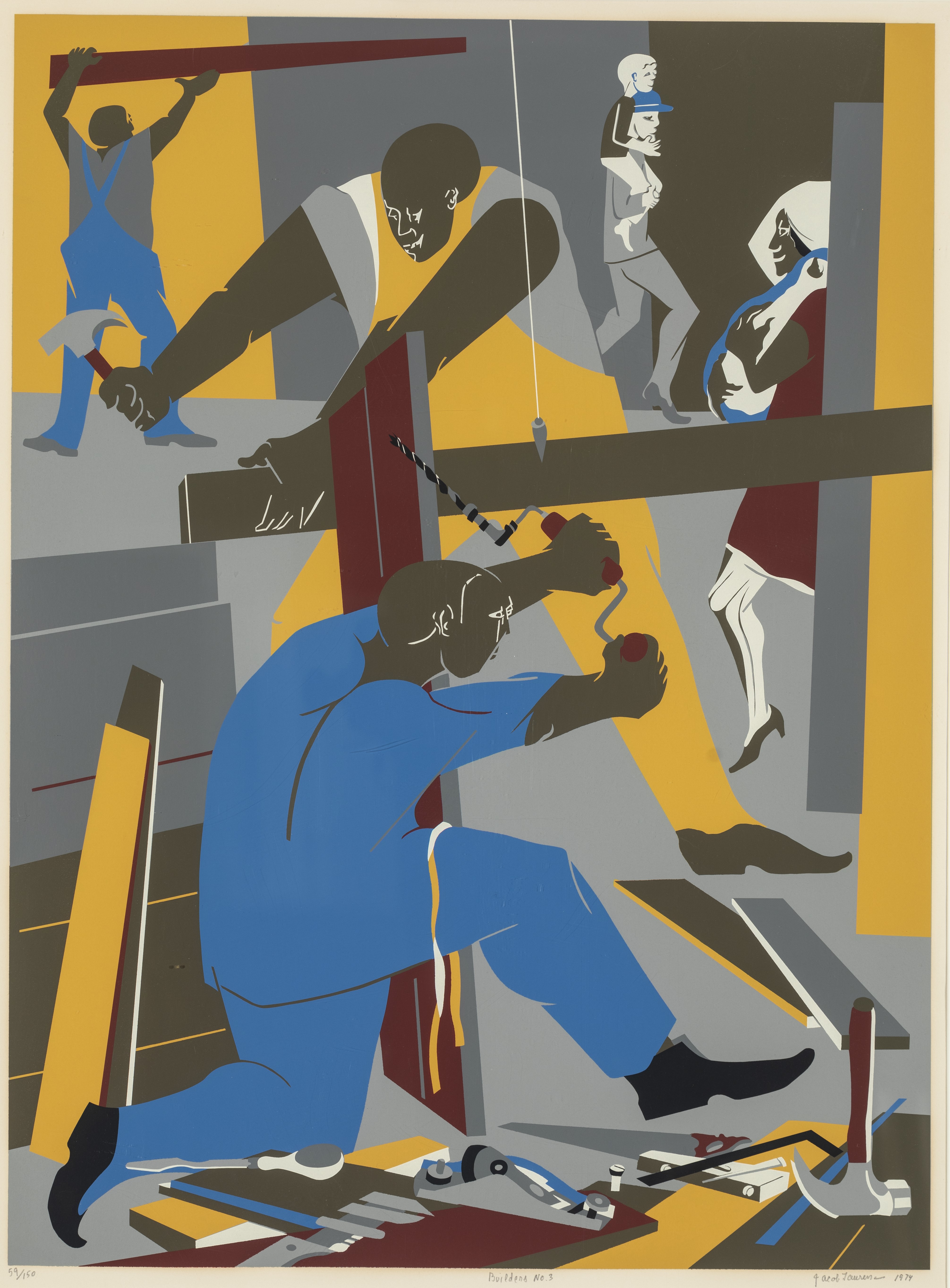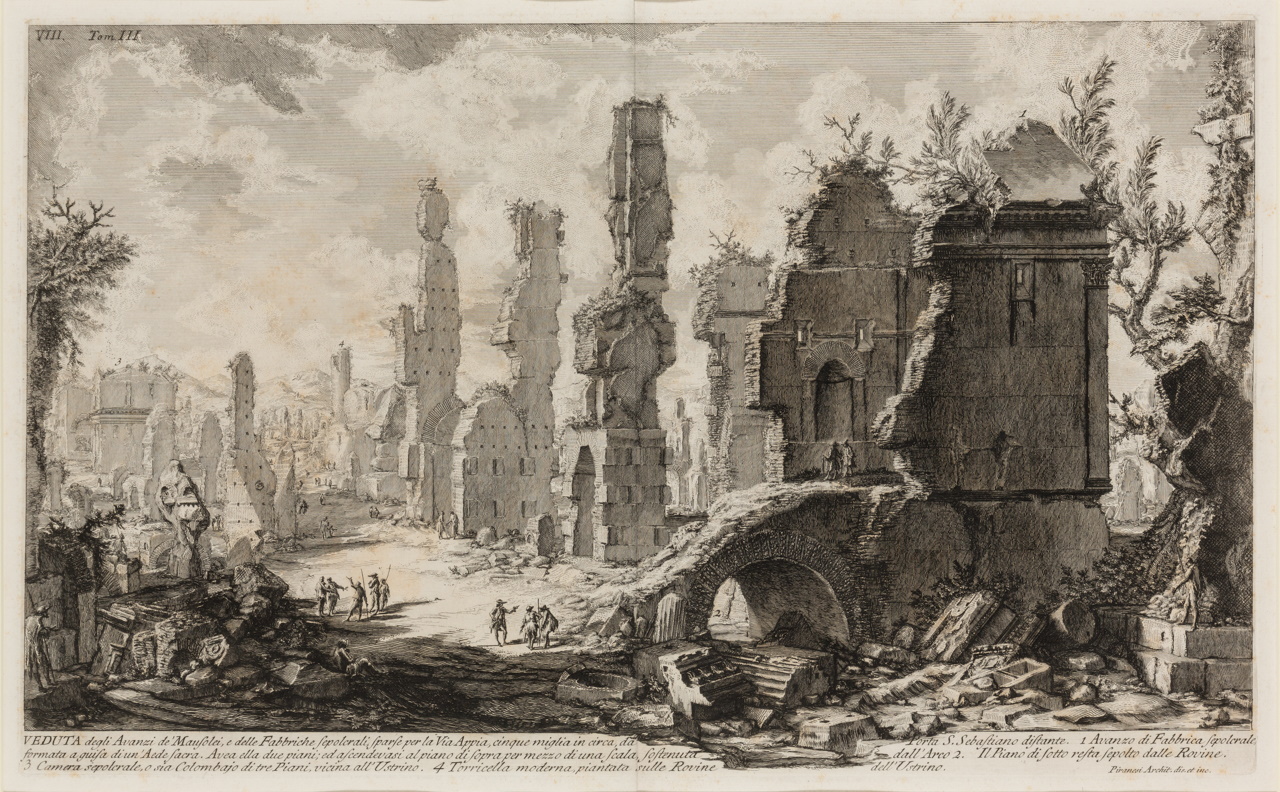

This powerful serigraph print from the permanent collection was created by Jacob Lawrence (1917-2000), one of this century's most widely acclaimed artists.
Lawrence was born in Atlantic City, New Jersey, but moved to Harlem, New York, at 13. He is among the few painters of his generation who grew up in a Black community, received instruction primarily from Black artists, and was influenced by the experiences of Black individuals.
Lawrence's artwork portrays the lives and struggles of the Black community, capturing their experiences through several series focused on figures such as Toussaint L'Ouverture, Frederick Douglass, and Harriet Tubman, as well as themes related to life in Harlem and the civil rights movement of the 1960s. His style is characterized by vibrant colors and abstract forms.
In the 1940s, during a time of widespread segregation, Lawrence broke racial barriers by becoming the first Black artist whose work was acquired by the Museum of Modern Art in New York City.
He stated, "If at times my productions do not express the conventionally beautiful, there is always an effort to express the universal beauty of man's continuous struggle to lift his social position and to add dimension to his spiritual being."
Researched and written by:
Julianna Collins, Stamelos Gallery Center former intern, UM-Dearborn art history/museum studies graduate, Class of 2025

This dynamic lithograph print from the permanent collection was created by Helen Gerardia (1903 - 1988), a painter and printmaker who worked primarily in New York.
Born in what is now Dnipro, Ukraine, Gerardia immigrated to the United States and settled in New York. She worked as a public school teacher in New York City before beginning her art studies at the Art Students League of New York in 1947, aiming for a professional career as an artist. Gerardia continued her education at the Hofmann School under the Abstract Expressionist Hans Hofmann (1880–1966).
Her first solo exhibition took place in 1953. She became an original member of the Vectors, a group of New York artists with strong female representation, formed in 1957. While Hofmann's Abstract Expressionist style influenced her early work, Gerardia’s interests shifted to Cubism and hard-edged, precise geometric abstraction. Her work reflects her fascination with geometry, engineering, architecture, and the urban landscape.
The artist stated, "I have always been interested in the play of light and its effect on form and color. Another quality of light, the prismatic breaking up of color, has always fascinated me. I felt that by placing my color in broken areas, I could, in a way, approximate the movement of atmosphere and the divisibility of color."
Researched and written by:
Julianna Collins, Stamelos Gallery Center former intern, UM-Dearborn art history/museum studies graduate, Class of 2025

This intricate print etching is a highlight of the permanent collection.
Giovanni Battista Piranesi is renowned for his extensive series of etchings portraying Roman monuments ranging from ancient to 18th century. Trained in architecture and engineering in Venice, he was also a trailblazer in archaeology. His prints were widely circulated, and he became one of the most influential architects, designers, and printmakers of his era.
Spending his early years in Rome studying and sketching ancient architecture, Piranesi quickly mastered etching techniques. He featured in his images fantastic complexes of buildings that could exist only in imagination and he depicted in meticulous detail the aqueduct system of the ancient Romans. The pieces that resulted from his extensive research were compiled into four volumes titled Antichità Romane, published in 1756. This series earned him election to the Society of Antiquaries of London, an academic society of historians and archaeologists in the United Kingdom.
As depicted in Ruins of the Mausoleums Along the Via Appia, Piranesi balances the scenic appearance of Roman architecture with his detailed descriptive text on one plate.
The artist stated, "I need to produce great ideas, and I believe that if I were commissioned to design a new universe, I would be mad enough to undertake it."
Researched and written by:
Julianna Collins, Stamelos Gallery Center former intern, UM-Dearborn art history/museum studies graduate, Class of 2025

Jacob Lawrence (1917-2000), Serigraph print, 1974
Gift of Gilbert M. Frimet,
Collection of UM-Dearborn (1980.065)
Photographed by Tim Thayer
This powerful serigraph print from the permanent collection was created by Jacob Lawrence (1917-2000), one of this century's most widely acclaimed artists.
Lawrence was born in Atlantic City, New Jersey, but moved to Harlem, New York, at 13. He is among the few painters of his generation who grew up in a Black community, received instruction primarily from Black artists, and was influenced by the experiences of Black individuals.
Lawrence's artwork portrays the lives and struggles of the Black community, capturing their experiences through several series focused on figures such as Toussaint L'Ouverture, Frederick Douglass, and Harriet Tubman, as well as themes related to life in Harlem and the civil rights movement of the 1960s. His style is characterized by vibrant colors and abstract forms.
In the 1940s, during a time of widespread segregation, Lawrence broke racial barriers by becoming the first Black artist whose work was acquired by the Museum of Modern Art in New York City.
He stated, "If at times my productions do not express the conventionally beautiful, there is always an effort to express the universal beauty of man's continuous struggle to lift his social position and to add dimension to his spiritual being."
Researched and written by:
Julianna Collins, Stamelos Gallery Center former intern, UM-Dearborn art history/museum studies graduate, Class of 2025